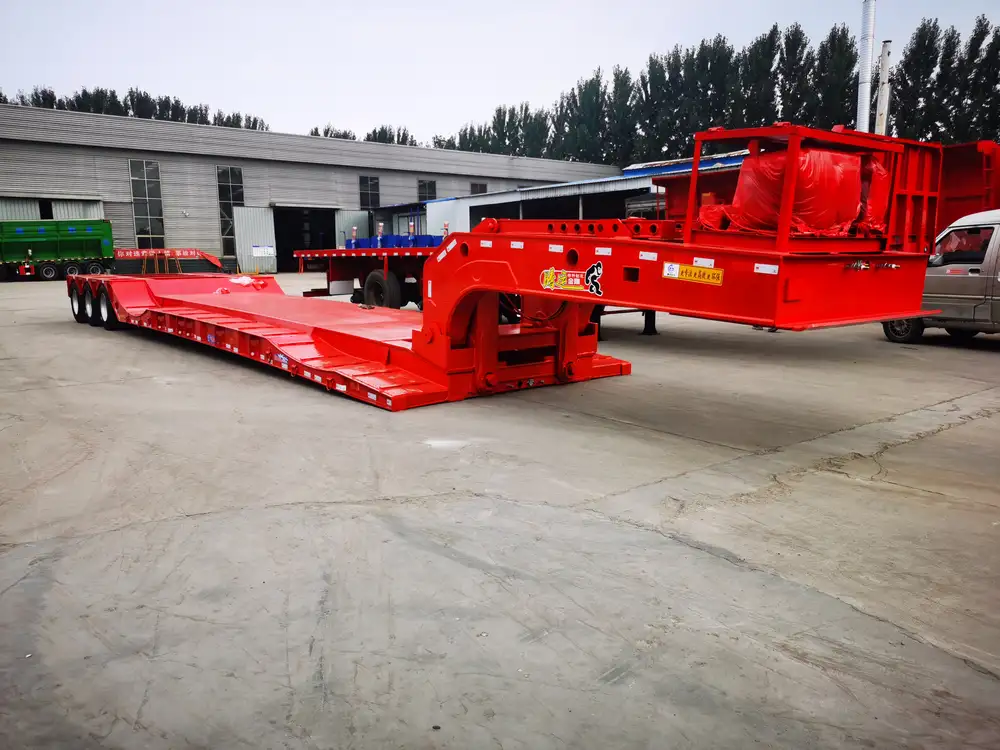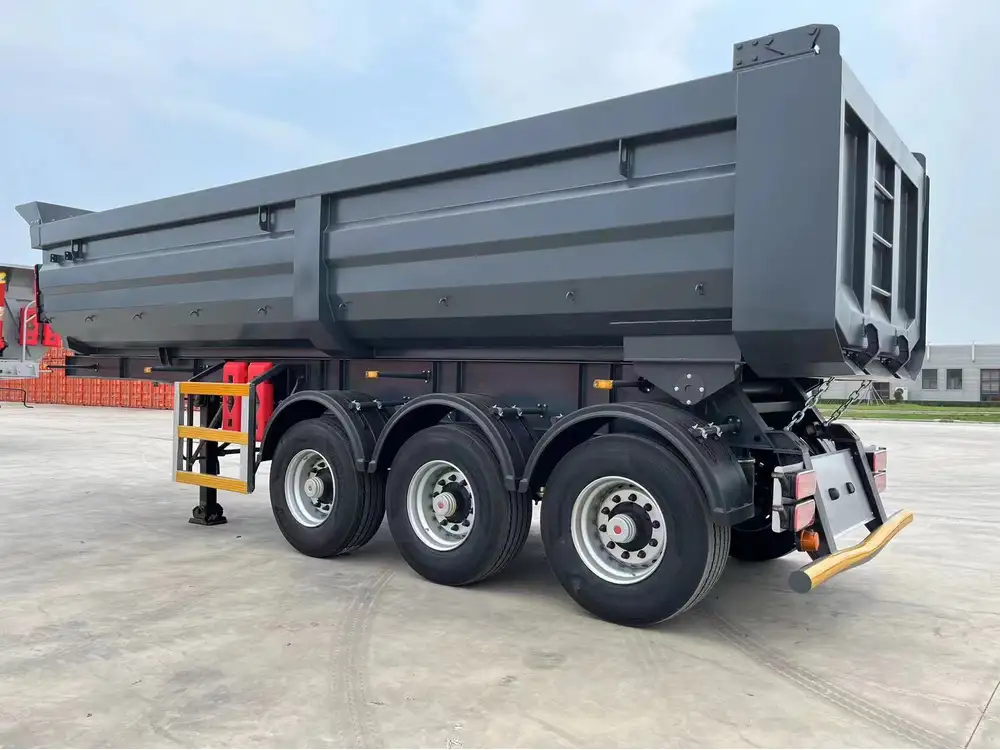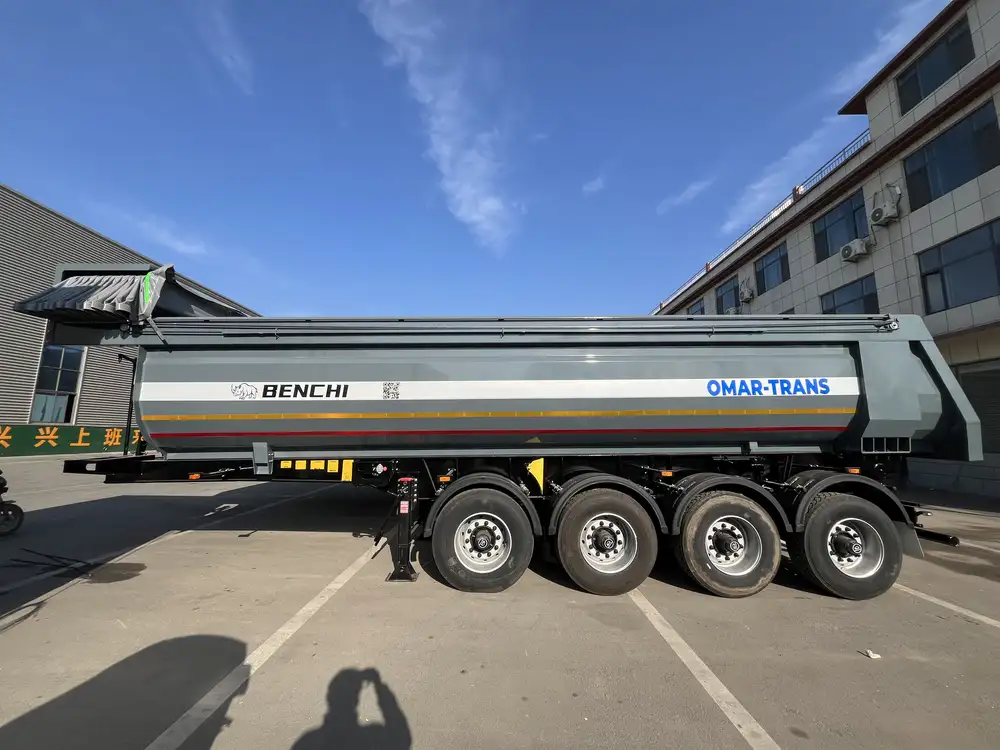In the world of transport logistics and heavy-duty trailers, the belly dump trailer stands out due to its unique construction and efficient unloading capabilities. A critical component of this trailer type is the pin that secures various elements, including the trailer’s connection to the truck and the operation of its dumping mechanism. Understanding what a pin for a belly dump trailer looks like, its functions, and considerations surrounding its maintenance can significantly improve operational efficiency. This article delves into the specifics of belly dump trailer pins, ensuring that both novice and experienced operators appreciate their essential role.
What is a Belly Dump Trailer?
Belly dump trailers are specialized equipment used primarily in the construction and aggregate industries. They are designed to facilitate the quick unloading of materials, such as gravel, sand, or asphalt, by spreading them evenly across a designated area. Unlike traditional end dump trailers, which release their contents from the back, belly dump trailers feature a unique design that allows for dumping from the belly or bottom.
Key Components of a Belly Dump Trailer
Understanding the critical components of a belly dump trailer is crucial to appreciate the role of pins. Here are the main parts:
| Component | Description |
|---|---|
| Body | The main structure of the trailer designed to hold materials. It is usually made from high-strength steel to withstand heavy loads. |
| Axles | These components support the trailer and provide stability during transport, usually two to three in number, depending on the size and load. |
| Hoppers | These are the compartments where materials are stored; they often have doors that open to facilitate unloading. |
| Towing Mechanism | The system used to hitch the trailer to a truck or another vehicle, which includes the pin mechanism. |
| Hydraulic System | This system operates the mechanisms that open the hopper doors, allowing for efficient unloading. |

The Role of Pins in Belly Dump Trailers
Pins are essential for the safe and efficient operation of belly dump trailers. There are primarily two types of pins associated with these trailers:
- Hitch Pins: These pins connect the trailer to the towing vehicle. They ensure that the trailer remains securely attached during transport.
- Drop Pins: These pins are integral to the operation of the dumping mechanism, allowing for the controlled release of materials.
Characteristics of a Pin for Belly Dump Trailers
What does a pin for a belly dump trailer actually look like? Here’s a detailed examination.
1. Pin Material and Construction
Pins used in belly dump trailers are typically made from high-grade steel, designed to withstand immense stress and wear. The choice of material ensures durability, resilience to corrosion, and the ability to handle heavy loads without bending or breaking. Most common pin types include:
- Hitch Pins
- Retaining Pins
- Quick Release Pins

2. Dimensions
Pins for belly dump trailers come in various sizes, but the most common aspects look like this:
| Type of Pin | Diameter (inches) | Length (inches) | Typical Applications |
|---|---|---|---|
| Hitch Pin | 1-3 | 2-5 | Towing connections |
| Retaining Pin | 0.75-2 | 1-4 | Holding and securing mechanisms |
| Quick Release Pin | 0.5-1.5 | 2-6 | Fast disconnection systems |
Such varying dimensions cater to the specific requirements of different trailer models and operational contexts.
3. Design Features
A standard belly dump trailer pin will also possess certain design features aimed at enhancing functionality:
- Grooved Ends: Most pins include grooves that allow for the attachment of safety clips or locking mechanisms, ensuring they remain secure during operation.
- Corrosion Resistance: Some pins are coated or treated to resist rust and other forms of corrosion—vital for longevity given the elements these trailers operate under.
- Threaded Sections: Certain pins may have threaded sections for added security, allowing the operator to tighten it in place easily.
Troubleshooting Common Issues with Belly Dump Trailer Pins
Despite their robust construction, users may encounter various issues with trailer pins. Recognizing these problems early on can save time and prevent costly downtime.
| Issue | Symptoms | Potential Solutions |
|---|---|---|
| Loose Pins | Unsecured hitch or dumping mechanism | Regularly inspect and tighten. Replace if damaged. |
| Wear and Tear | Signs of rust, bending, or pitting | Conduct regular maintenance inspections. Replace as needed. |
| Corroded Connections | Difficulty in attaching or detaching the trailer | Clean thoroughly and apply a suitable lubricant. |
| Misalignment | Uneven dumping or difficulties in towing | Adjust connections and ensure proper alignment. |

Best Practices for Maintaining Pins in Belly Dump Trailers
Maintaining the pins on belly dump trailers is essential for ensuring safety and efficiency during operations.
Routine Inspections: Regularly check all pins for signs of wear, rust, and structural integrity. Early detection can avert major problems that could lead to accidents.
Proper Lubrication: Apply appropriate lubricants to prevent corrosion and ensure smooth operation of any moving parts involved in the pin mechanism.
Secure Connections: Ensure hitch and drop pins are securely engaged before transport to prevent disconnection and loss of loads.
Replacement Parts: Always keep an inventory of spare pins, as swift replacements can minimize downtime during operations.
FAQs About Belly Dump Trailer Pins
What materials are belly dump trailer pins made from?
Most are made from high-strength steel to handle large loads and resist wear and corrosion.

How do you know if a pin needs to be replaced?
Look for visible signs like severe rust, bending, or cracks. A loose pin that cannot be adequately secured should also be replaced.
Can I use any pin for my belly dump trailer?
It is advisable to use manufacturer-specified pins, as they are designed to fit particular models and meet safety standards.
How often should I inspect the pins?
A regular inspection regimen should be followed, ideally before each use, and a more thorough check should be performed regularly—monthly or quarterly.

Conclusion
A comprehensive understanding of what a pin for a belly dump trailer looks like and the various functions it serves is critical for anyone involved in heavy hauling and logistics. These small yet essential components ensure the operational integrity of trailers and enhance the overall efficiency of transport operations.
By recognizing the significance of proper maintenance, the characteristics of quality pins, and troubleshooting common issues, operators can avoid costly mishaps and downtime. The key to an efficient belly dump operation lies not just in the equipment but also in the details—specifically, those all-important pins that hold everything together. Keep your trailers in optimal condition, and they will serve you effectively for years to come.
Belly dump trailers may not often be in the spotlight, but their efficiency and functionality hinge on understanding the pivotal role of every component, especially the pins.



